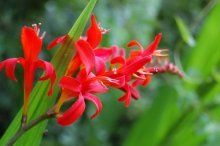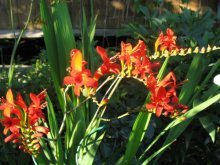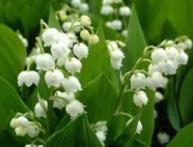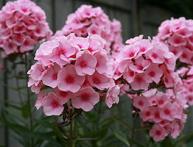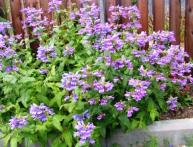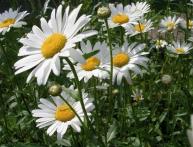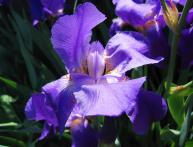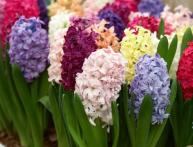Graceful Montbrezia flower
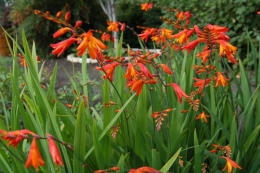
Montbrecia (also called crocosmia) is an elegant perennial plant for open flower beds and lawns. This flower is somewhat reminiscent of gladiolus, only much smaller. It blooms from approximately mid-summer until frost.
Content:
How to plant montbrecia
Montbrecia (crocosmia) is a bulbous plant that takes its roots from Africa. This flower appeared in Europe in the 19th century thanks to the French botanist de Montbret.
Montbrecia grows well in a bright place that is protected from the wind. Although this plant is not whimsical by nature, it is still advisable that the soil be richly fertilized before planting.
The most famous types:
- Montbrecia golden. One of the largest flowers, yellow-orange in color.
- Montbrecia massonorum. This type of plant is frost-resistant, which is ideal for our climate. It has a large bulb and small flowers.
- Montbretia paniculata. Frost-resistant, has bright orange small flowers.
You can grow this flower from seeds, bulbs and babies. Bulbs are usually planted in open soil in late April or early May. But first, a few days before planting, the tubers are brought into the house for a while so that they “warm up” at room temperature. You need to remove the remaining leaves and roots from them, and, if necessary, separate the children for reproduction.
The bulbs should be planted in the soil to a depth of 8-10 cm, and the distance should be at least 10 cm, but no more than 15.The children are planted not so deep, about 5 cm, and the distance between them is 5-7 cm. They bloom the next year.
Growing flowers need abundant watering, as well as loosening the soil. Before flowering, Montbrecia needs to be fed with fertilizers made from mineral substances containing nitrogen. And during the period when buds are formed, fertilizers should also contain potassium.
In order to the bulbs are better ripened and were more suitable for planting next year, it is necessary to cut the flowers before they begin to fall and bloom.
Growing Montbretia from seeds
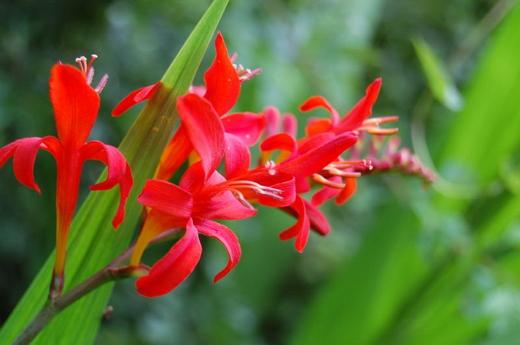
Growing Montbretia from seeds is not an easy task. Seeds cannot be planted directly into the ground, as they may not grow. To begin with, they should be planted in prepared soil, which consists of peat, humus, turf and sand. February and March are the best months for this.
Before planting, the seeds must be soaked in water. After they have sprouted, they need to be planted in special boxes and, if the weather is good, taken outside for hardening. They need to be planted in the soil at the same period when the tubers of these flowers are planted. Montbrecia, grown from seeds, blooms already in the third year, but there are exceptions when it blooms in the second.
If the climate where you live is mild, then you can leave this plant in the ground for the winter, having previously covered it, but if the winters are quite cold, then it is better to dig up the bulbs. To store the bulbs, you must first dry them thoroughly (5-7 days), and then put them in a wooden box and hide them in the cellar.
Flower care
Caring for Montbretia is quite simple, so it is a welcome “guest” for your garden:
- It rarely needs to be watered, but abundantly
- After this, you definitely need to loosen and weed the ground.
- Sometimes you need to tie up this flower, but only in cases where it is tall enough and grows in open places where the wind can break it
- Montbrecia needs to be fed with mineral fertilizers (3 g/l), or with mullein infusion - 1:10 (and if you also want to speed up the growth of this plant, then feed it with nitrogen fertilizers; when buds appear, you can water them with fertilizers with the addition of potassium)
As mentioned above, Montbrecia does not need to be dug up for the winter if the climate allows it. But then it needs to be covered with a thick layer of dry leaves, the height of which should be at least 20 cm. And in order to protect it from dampness, you also need to cover it with film.
But if you have a varietal Montbrecia, then it is better to dig it up for the winter. And this needs to be done at the end of October, when the children have multiplied and matured. And only in dry weather. After this, cut off all the stems, leaving only 5 cm, dry and put in a box, and then cover with peat and store in a cool, dark place at a temperature no higher than 10 degrees.
Diseases and pests
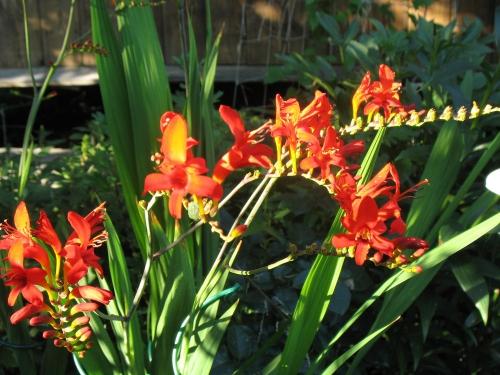
Like any plant, Montbrecia is also susceptible to all sorts of diseases. The “symptoms” of diseases of these plants are:
- rotting bulbs
- appear dark spots and stripes, leaves and flowers are deformed
- rot and gray mold on flowers
- leaves become covered with white spots
- the tips of the leaves turn yellow and the roots die over time
These diseases are called differently - fusarium, bacteriosis, or viral disease. All sorts of pests can also multiply on plants, such as mites, aphids, nematodes, which gnaw at the roots, as a result of which the flowers simply begin to deteriorate and rot.To avoid all this, you need to plant a healthy bulb in healthy soil. And for diseased plants, you need to use special means for healing and change the planting location next year.
So beautiful and sophisticated flowers will decorate your garden or flowerbed and will please the eyes. They pair beautifully with other colors and also look good alone. In its attractiveness it can compete with even the most sophisticated and luxurious gladiolus.
Educational video about Chinese gladiolus:
Interesting information about the vegetable garden

